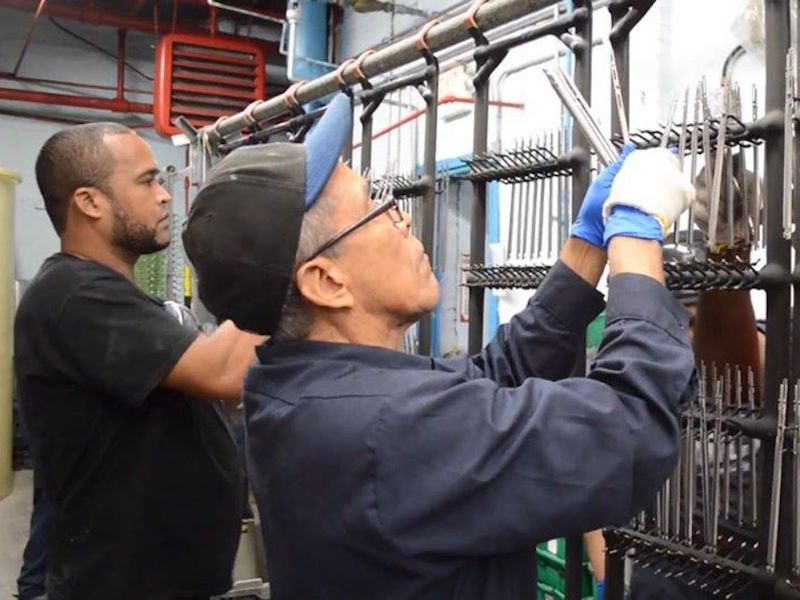The New York State Pollution Prevention Institute (NYSP2I) recently assisted a Brooklyn metal finishing operation improve acid use efficiency to reduce acid purchase costs, treatment costs, and hazardous waste quantities.
Control Electropolishing is an electropolishing and metal finishing company located in Brooklyn, New York, and provides finished corrosion resistant stainless steel medical components to the medical devices sector of the medical and surgical industries.
Electropolishing is an electrochemical process that removes material from a metallic work piece and is used to polish, passivate, and deburr metal parts. Control Electropolishing’s process includes cleaning, acid treatment, and the final deionized water rinsing as needed to meet the specifications of certain medical devices. As parts go through the various processes that involve acid treatments, acid is consumed and dissolved metals build up in the solutions. This leads to the acids becoming either over saturated with metals or too slow for continued use and must be disposed of as hazardous waste either after treatment (sludge) or as corrosive liquid. As a result, Control Electropolishing sustainability focus is to improve acid use efficiency to reduce acid purchase costs, treatment costs, and hazardous waste quantities.
Solution
NYSP2I collaborated with Control Electropolishing to complete an acid control and recovery assessment to identify cost-effective options to reduce their acid purchases and acid waste along with sludge waste. An on-site assessment was conducted to review the processes that use acids in addition to the wastewater treatment processes.
NYSP2I conducted a baseline analysis to investigate acid control and recovery methods to minimize purchase, treatment and disposal costs of acids, and wastewater treatment methods to reduce sludge volume and weight.
Acid recovery technologies were addressed, which provided technically viable options to reduce Control Electropolishing’s liquid acid waste. These technologies included; diffusion dialysis, acid sorption, membrane separation, PRO-pHx, and distillation.
Results
NYSP2I identified some cost-effective options for Control Electropolishing to reduce their acid use and sludge waste, which resulted in the following conclusions:
- Based on the short payback economic analysis, Control Electropolishing might want to consider converting five key process tanks to PRO-pHx (acid life extender) which could lead to a potential of $4,400 annual savings.
- The long term benefits of a sludge dryer suggest that there would be a reduction in both the weight and volume of the outgoing sludge with a projected annual savings of $16,620.
“We have been voluntarily part of this research and the results have been extraordinary,” says Nancy Zapata-Acosta, president of Control Electropolishing. “Through this research, NYSP2I collaborated with Control Electropolishing in identifying the best ways to reduce our carbon footprint on our planet, by helping us reduce our hazardous waste. Our commitment as a company in addition to offering quality, extraordinary service, and satisfaction to our customers, is the protection and conservation of the environment, we all must collaborate to guarantee a better planet for the next generations.”
NYSP2I launched in 2008 on the campus of Rochester Institute of Technology (RIT) through funding by Empire State Development (ESD). As a pilot program with a budget of $500,000, our first initiative was to provide technical support to manufacturers across New York State. Today, our budget exceeds $4 million and the breadth of our programming has grown as we work across many sectors and within many communities throughout the state.
Visit http://www.controlelectropolishing.com/ and https://www.rit.edu/affiliate/nysp2i/



































